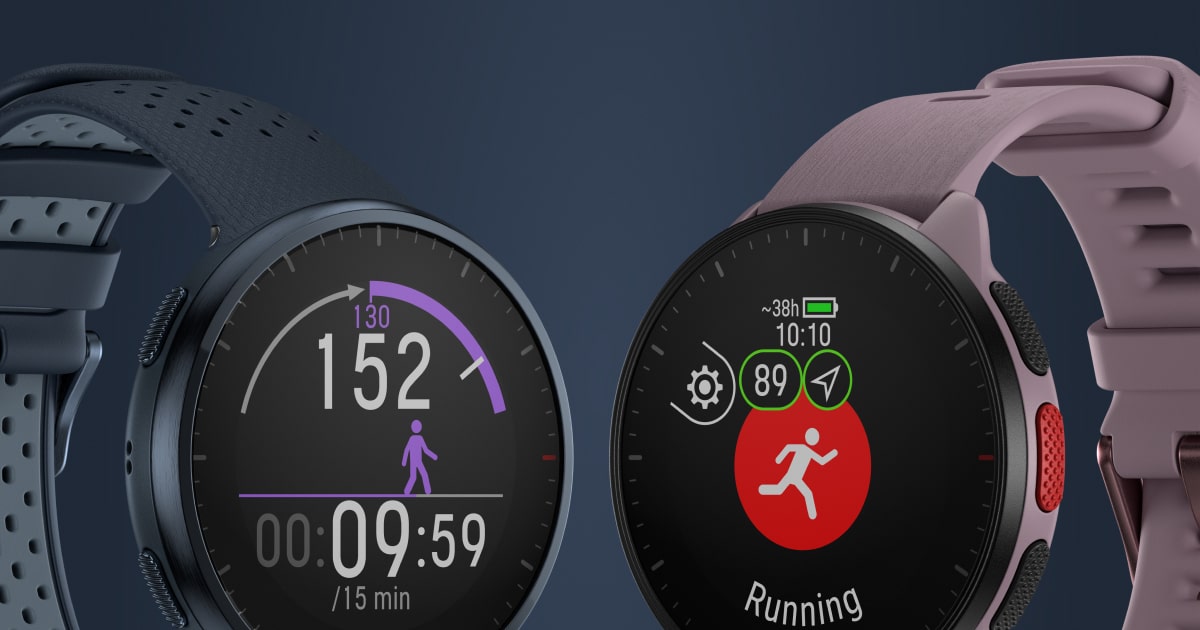If you’re tracking your heart rate when running (which is a great idea), you could wonder if your running heart rate is normal. The thing is, how do you know what’s normal? Normal for everyone else and normal for you?
Understanding what happens to your heart rate and body while you run is essential for knowing how to target your training. We chatted with Jason Lakritz, PT, DPT, a physical therapist at Finish Line Physical Therapy in New York City and the founder of Profunctional Running, about your heart rate when running.
Maximum Heart Rate
Before beginning to understand the variations that affect your heart rate when running, it’s essential to know your parameters. Namely, your maximum heart rate.
Your maximum heart rate (HR Max) is the highest number of beats per minute your heart can pump. It’s when your heart is under maximum stress, usually due to some form of intense physical activity.
Finding your exact maximum heart rate can be a little tricky. It requires you to do a field test with a heart rate monitor to place your body under the conditions that would cause you to reach your HR Max. Polar’s Running Performance Test is also another great way of testing this, as it only requires you to reach 85% of your HR Max for it to calculate your top score.
Alternatively, you can try calculating it yourself. “Your maximum heart rate can be loosely estimated by subtracting your age from 220,” says Lakritz. “This is a very crude estimation, and your max heart rate will generally go down as you age.”
Maximum Heart Rate Calculator
[polar-max-hr-calculator]
Running Heart Rate Zones and Energy
Once you have an idea of your maximum heart rate, you can use this to understand your five heart rate zones. Each zone is a percentage of your maximum heart rate, which indicate the intensity of any exercise you do so that you can understand how hard you are pushing yourself.
| Zone | Intensity | Percentage of Max HR |
| Zone 1 | Very light | 50–60% |
| Zone 2 | Light | 60–70% |
| Zone 3 | Moderate | 70–80% |
| Zone 4 | Hard | 80–90% |
| Zone 5 | Maximum | 90–100% |
For your overall fitness, it’s good to do workouts in different heart rate zones because each one has its benefits for your body. In order to achieve the right mix, some people create a heart rate training plan.
You can narrow this focus slightly when it comes to running. “Most heart rate training programs work within five zones, but you can simplify it to three,” says Lakritz. “There are specific energy systems in the body that are used when training at different intensities. You can assign a heart rate to each of these systems. “
THE AEROBIC SYSTEM
The aerobic system is your heart rate zones 1 and 2 (50–70% of your maximum heart rate). It uses fat to create energy and is a slow system, but it doesn’t create lactic acid, so you can stay there for a long time. “This is the system you’re using during your easy runs,” Lakritz says.
THE LACTIC THRESHOLD SYSTEM
The lactic threshold system is your heart rate zones 3 (70–80% of your maximum heart rate). It is a combination of the aerobic and anaerobic systems and uses a combination of fat and carbohydrates to create energy.
“When training using this system, the body needs energy faster, so it uses carbs,” Lakritz explains. “The way the body uses carbs to create energy is much faster. The problem is that when the body uses carbs to create energy, it causes a byproduct called lactic acid to form.” In the lactic threshold system, the body can clear this byproduct as fast as it’s made – think tempo running.
THE ANAEROBIC SYSTEM
The anaerobic system is your heart rate zones 4 and 5 (80–95% of your maximum heart rate). It primarily uses carbs for high-intensity running, so energy is needed quickly. “The body uses carbs so fast it can’t clear lactic acid fast enough, and the body goes fast, but only for short periods before it needs to slow down to clear the lactic acid,” Lakritz says. “This is used for speed training, such as interval running.”
Generally, you’re in one of those three zones during a run, but these systems are more of a continuum than specific categories. “As you run faster and faster, the amount of fat to carbs you use for energy will gradually change as you move through each category,” Lakritz says. “This is a simplified version of how the body uses energy.”
Normal Heart Rate for Running
When it comes to your heart rate, there is no ‘normal.’ Each person is different, and on any given day, their heart rate when running could be affected by various influences, as detailed below.
No matter what exercise you do, you should always target your workout to be between 50% to 85% of your maximum heart rate. So, when you begin running, you can aim for an easy run in zones 1 and 2 to work on your aerobic fitness.
As you gain experience, Lakritz suggests aiming for heart rate zone 3. “Your running heart rate should get into and stay in the 70–80% range. If your heart rate doesn’t reach this percentage of your maximum heart rate, you’re training more of your aerobic system, and if your heart rate goes above this range, you’re training more of the anaerobic system.”
It’s important to remember when you first try running in zone 3, you will need to ensure you take enough rest after each run. How much rest will vary, depending on each person. “The better trained at running at their lactic threshold heart rate an athlete is, the less rest they’ll need,” says Lakritz.
If you decide the goal of the workout is to train the anaerobic system, you’ll want to get your running heart rate up to 80–95% (zones 4 and 5). “This will require more rest if you want to keep the pace of each interval the same,” Lakritz says.
Factors affecting your heart rate when running
As we can see above, key factors can considerably impact your average heart rate. These include:
- Age
- Weight
- Fitness level/aerobic capacity
- Family history
However, each day is different, and other variables can influence your heart rate when running, such as:
So, it’s important to remember that sometimes your heart rate will be higher even though you feel fine. However, ensuring you are adequately hydrated and fuel your body effectively for your runs is always essential. If you’re ever concerned about how high your heart rate is, try these tips if you begin to feel dizzy or out of breath.
WHAT IF I DON’T HAVE A HEART RATE MONITOR?
Using a heart rate monitor is the most effective way to instantly know what is happening with your heart rate when running. However, if you’re running data-free, you can use other physical markers to estimate which system you’re training. “I like using the ‘talking test,'” Lakritz says.
“If you can talk in full sentences, you’re probably in the aerobic zone. If you can say four or five words at a time, you’re probably in the lactic threshold zone. If you can only say one or two words at a time, you’re probably in the anaerobic zone.”
While there’s no scientific basis behind this method, it’s a solid rule of thumb if you’ve headed out on a run without your Polar sports watch. But as we have seen above, best not to forget it.
READY TO BE A BETTER RUNNER?
Now that you understand why heart-rate training is an essential, you might be itching to lace your running shoes, get out of the door, and start running. Polar Pacer Pro and our collection of running watches are equipped with best-in-class heart rate monitoring, so you can always target the right heart zones and monitor the level of effort required for different intensities. You can also customize Polar Pro with different training views for running and see the information that matters the most at glance.
If you liked this post, don’t forget to share so that others can find it, too.
Please note that the information provided in the Polar Blog articles cannot replace individual advice from health professionals. Please consult your physician before starting a new fitness program.

